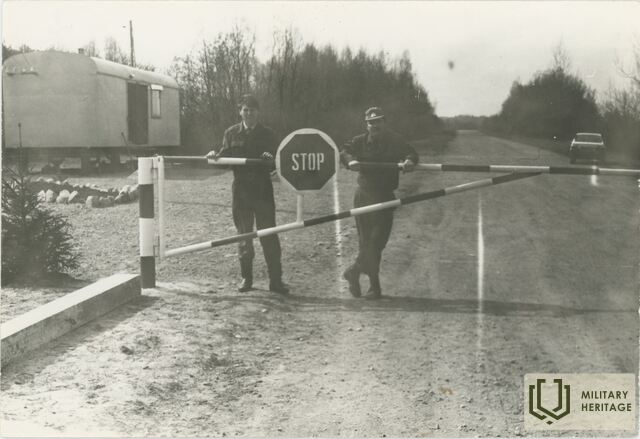Soviet aggression: attacks on Lithuanian border control posts in 1990–1991.

In 1990, after Lithuania regained its independence and began protecting its state borders, it faced attacks by Soviet power structures, which claimed the lives of more than one Lithuanian officer.
On March 11, 1990, Lithuania declared the restoration of its independent state. As befits an independent state, the protection of its borders was soon taken up. In November 1990, more than 50 border control posts were already operating in Lithuania. Unfortunately, only the established posts had to face attacks by the Soviet army, OMON, militia and collaborators. These posts were set on fire, bombed and otherwise destroyed, and Lithuanian officials were robbed, beaten and shot at.
One of the first cases was on December 17, 1990. At the Eišiškės border post, attackers demanded that Lithuanian border guards leave the territory of the “Polish Autonomous Republic” (in 1988–1991, the Vilnius District and Šalčininkai District Councils tried to declare the autonomy of the Vilnius Region or secede from Lithuania). When the latter refused to comply, the shift supervisor was beaten and the border guard’s wagon was destroyed.
On May 18, 1991, the Šalčininkai border post was fired upon by A. Fijazis, dressed in civilian clothes. Captain of the Belarusian SSR militia Fijazis threatened the border guards at least three times during the month of May. In response to the firing, the attacker was killed. The aggressors immediately retaliated. On the night of May 19, between 2:30 and 3:00 a.m., attackers killed Lithuanian border guard Gintaras Žagunis (1957–1991) at the Krakūnai border post.
The USSR leadership claimed that the attacks were carried out arbitrarily, not on its orders. However, in late May, the USSR Minister of Internal Affairs Boris Pugo admitted that the attacks were carried out by the OMON under his command. As the incidents continued, in late June the USSR Ministry of Internal Affairs took action to control the situation, and the attacks subsided by 31 July.
On July 31, 1991, Riga OMON killed 6 and seriously injured 2 officers at the Medininkai border post (Vilnius district), one of whom died in hospital a few days later. This event is known as the Medininkai massacre.
Incidents resumed during the August Putsch. However, after the putsch failed, attacks on Lithuanian border posts also ended. One of the legacies of those days is the Lithuanian border guard bunker in Saločiai, built to protect against aggressors.
8 officers were killed and about 60 were injured – this was the price of Lithuanian Independence and the attacks of the Soviet aggressors. And these were not the only or first Soviet victims – even more lives were lost during the January 1991 events in Vilnius.
Gintautas Surgailis, Protection of the State Border in 1990–1994, Vilnius: General Jonas Žemaitis Military Academy of Lithuania, 2008.





